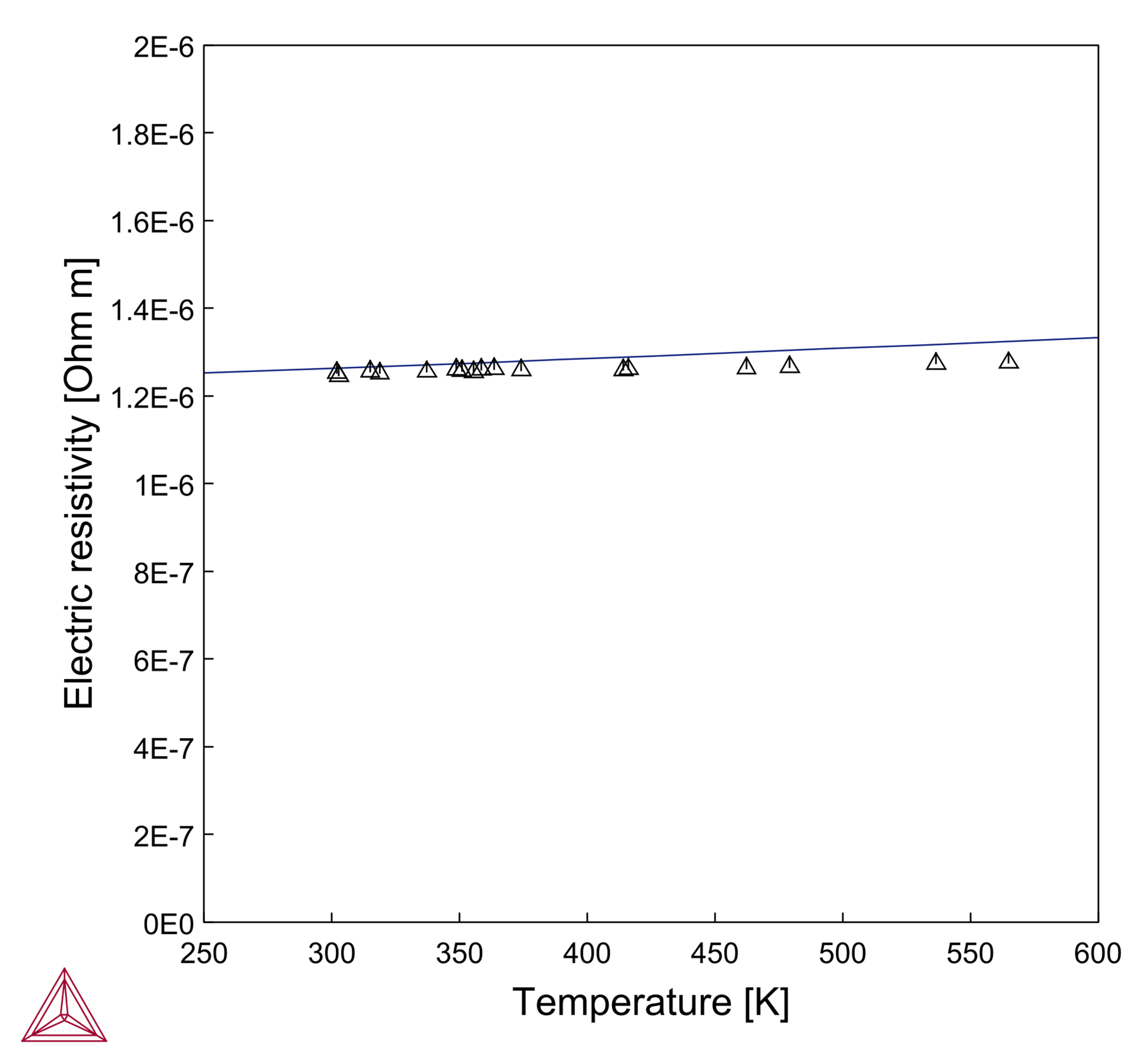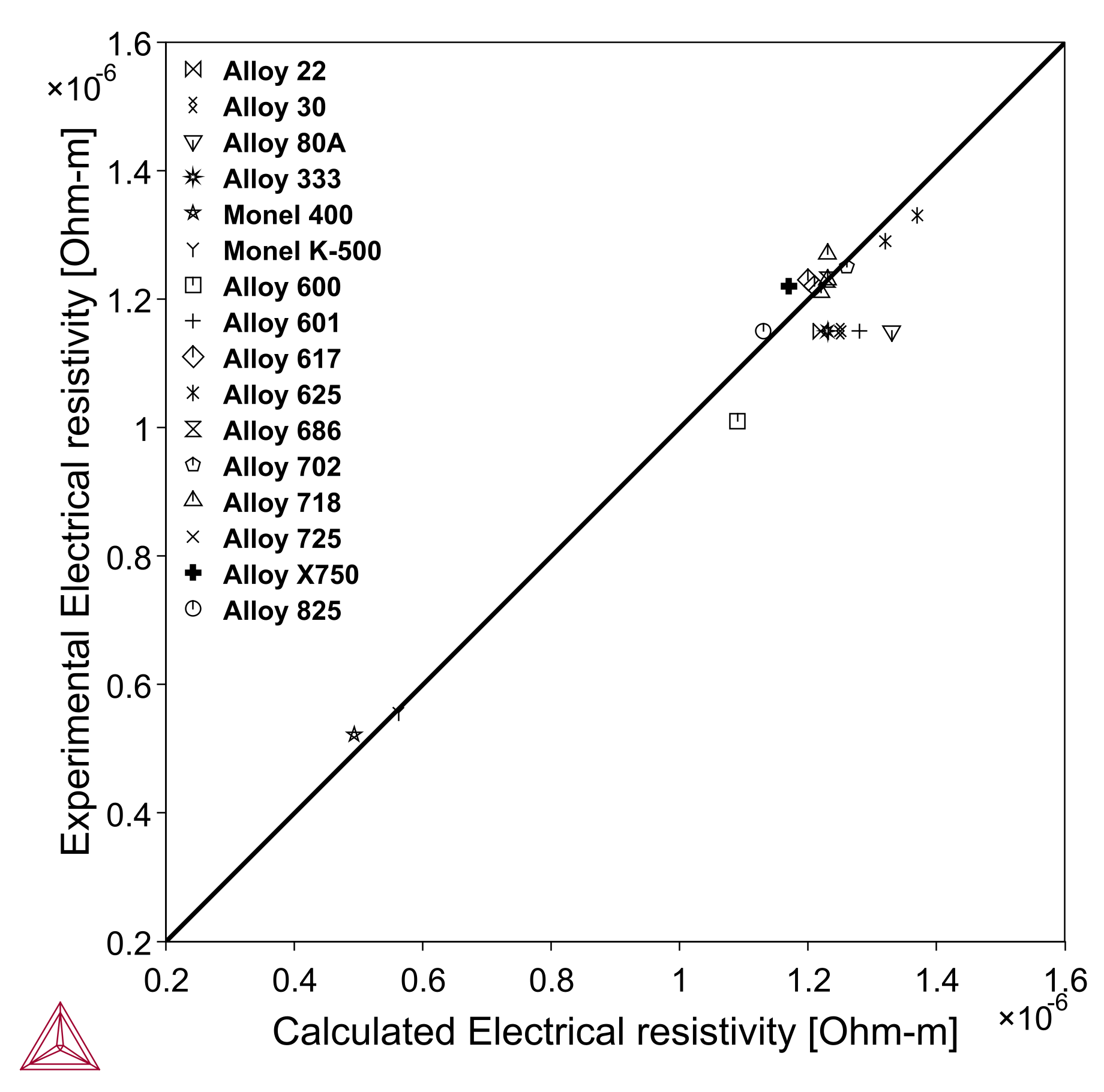Electrical Resistivity of Some Commercial Alloys
Using the TCS Ni-based Superalloys Database (TCNI), you can calculate the quantities of a phase φ with the variable ELRS(φ) or a system (i.e. alloy) with ELRS. You can also calculate the derived quantity, i.e. electrical conductivity (ELCD) in a similar way.
The database includes electrical resistivity starting with version 11 (TCNI11).
Ni-base Superalloy IN702
With the electrical resistivity described for most binary and several ternary systems, predictions can be made for multicomponent alloys, such as a Ni-base alloy IN702 in this example. The electrical resistivity of Ni-base alloys is usually in the order of 1e-6 ohm-m.
Figure 1: Electrical resistivity of alloy IN702 predicted using the Frozen-in Temperature Model available with the Property Model Calculator and compared with experimental data.
Commercial Ni-base Alloys
This example shows the predicted electrical resistivity of several commercial Ni-base alloys. The values are calculated by freezing-in the state at the typical annealing temperature of manufacture for each alloy. Deviations are expected, since the treatment of a material is not always known in the literature, and materials can have wide ranges of typical treatment temperatures.
Figure 2: Parity plot comparing calculated with experimental electrical resistivity of various Ni-base superalloys at room temperature.
Read more on our website about Property Models, including information about the material specific Model Libraries (i.e steel, nickel, titanium, etc.), as well as how to create your own custom models in TC‑Python. If you are in Thermo‑Calc, press F1 to search the help.

